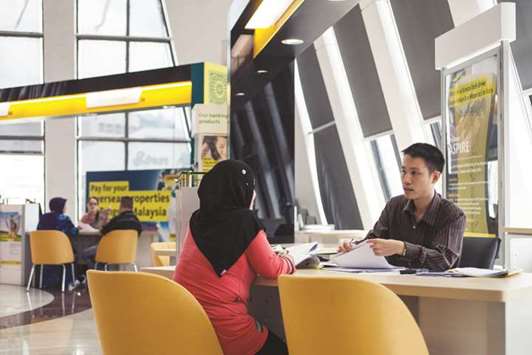The Asian Development Bank (ADG) in its latest evaluation of Islamic finance in Asia, entitled “An overview Islamic Banking and Finance in Asia” and issued last month, came to the conclusion that the outlook for the industry was generally positive, although the market keeps struggling with liquidity issues particularly in the sukuk segment, as well as regulatory challenges.
Looking back, Islamic banking and finance have experienced rapid growth and development in Asia, the ADB stated. The continent is an important part of the global economy as well as the Islamic financial system.
A number of Asian countries count the majority of their population as Muslims, namely Pakistan (96%), Bangladesh (86%), Indonesia (87%) and Malaysia (61%), which naturally makes a favourable environment for the development of Islamic finance.
The Islamic banking assets and financial products in Asia are much larger than those in Europe and North America, largely due to the Malaysian Islamic finance marketplace, which makes the country a global leader in Islamic financial services, holding more than a 10%-share of the global Islamic banking assets. Indonesia, Pakistan and Bangladesh have smaller shares, but their growth and regulatory developments in recent years have enabled them to expand their volume of Shariah-compliant banking assets, the report notes.
However, in terms of supervisory frameworks for Islamic banking and finance in Asia, the situation is diverse. Some Asian countries, like Kazakhstan, apply a single integrated regulatory framework to all Islamic banks, while some other nations, such as Indonesia and Malaysia, follow a mixed approach by adopting a similar regulatory framework for both Islamic and conventional banks, but they issue separate guidelines for areas that are specific to Shariah banking. Other jurisdictions leave it more or less to the banks themselves and their own in-house Shariah guidance.
The ADB expects the growth of Islamic finance to continue based on the following fundamentals: The Muslim populations in many Asian countries, especially in Southeast Asia, are increasing and with them their middle classes, which leads to improving living standards and higher demand for banking services and investments products which are in line with Muslim religious beliefs.
Secondly, governments and financial authorities in several Asian countries are increasingly promoting the development of Islamic finance to boost investments and achieve sustainable funding.
Thirdly, the ethical character and financial stability of Islamic financial products increase their attraction especially in emerging markets as a viable alternative financial system, while the asset-based nature and risk-sharing aspects of Islamic finance improve the overall economic balance between the real and the finance sector.
However, the ADB report also identified challenges facing Islamic finance in Asia, one of which is the problem that the regulatory and supervisory frameworks in many Asian jurisdictions do not make allowances for the unique risks of the industry, particularly in term of capitalisation with regards to the Basel III accord and its definition of tier 1 and tier 2 capital and liquidity ratios.
The ADB recommends that national authorities improve safety nets and resolution frameworks for Islamic finance which the body defined as “generally underdeveloped,” with very few countries, for example, having adopted a fully-fledged Islamic deposit insurance scheme with premiums invested in Shariah-compliant assets.
Another “pressing challenge” remains the lack of liquid and active secondary sukuk markets in key Islamic finance domiciles in Asia, the ADB noted, which puts a brake on sukuk trading activity. To date, in Asia only Malaysia and Iran have a fully functioning Islamic money market with an active secondary market, while other markets keep struggling to keep liquidity afloat.

An employee serves a customer inside the Malayan Banking Bhd (Maybank) branch at the company’s headquarters in Kuala Lumpur (file). The Islamic banking assets and financial products in Asia are much larger than those in Europe and North America, largely due to the Malaysian Islamic finance marketplace, which makes the country a global leader in Islamic financial services, holding more than a 10%-share of the global Islamic banking assets.


